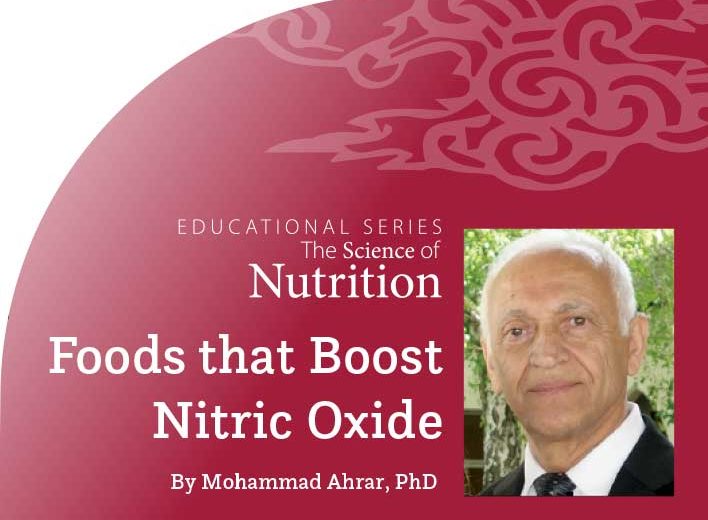Introduction
A wealth of information about viruses, especially the novel coronavirus (COVID-19), are found in the news media and websites. We have no intention of discussing the disease or mentioning the ways of prevention or giving any medical advice. In this article, we will review the basics of the immune system and how some nutrients may help improve the immune system, which can alleviate the severity of bacterial and viral infections.
How the immune system fights diseases
The immune system is a broad term and includes different organs (such as the liver, bone marrow, spleen, and lymph nodes), white blood cells (WBCs), and some blood proteins that work together to protect us from pathogens such as bacteria and viruses. We are born with a certain level of protection, referred to as innate immunity. The acquired immune system protects the body from a specific invader by creating antibodies as they are exposed to a new pathogen such as COVID-19 for the first time. It can take several days for antibodies to develop. But after the first exposure, the immune system will recognize the invader and defend against it. WBCs, also called immune cells, play a major role in the immune system.
WBCs get training to fight – Like other cells of the body, WBCs have special receptors made of complex sugars and proteins on their cell membranes. The receptors can detect any foreign chemicals, such as bacterial or viral proteins, and become activated to produce different chemicals against them. There are different types of WBCs in the body, including lymphocytes, monocytes, natural killer cells, and phagocytes to name a few.
How immune cells are activated – WBCs, especially lymphocytes, need to learn about the invaders and develop special weapons to be ready to respond to an invasion. Some lymphocytes are trained in the thymus gland, located under the breastbone (referred to as T lymphocytes or T-cells, where T stands for thymus). Some other lymphocytes are primed while they are still in bone marrow (referred to as B lymphocytes or B-cells, where B stands for bone marrow). Now let’s see what these cells learn.
a) T lymphocytes – As soon as they detect a bacterial or viral protein, T lymphocytes develop special chemicals on their cell membranes that work as sensors to detect foreign substances. Additionally, they release chemicals that not only activate themselves to react, but also alert other WBCs to come into combat with invaders.
b) B-lymphocytes – When B-cells encounter a foreign protein, they rapidly make baby cells (referred to as plasma cells) that release special antibodies against specific foreign proteins. However, it can take several days for antibodies to develop. But after the first exposure, antibodies can stay in the blood for months or years, and will recognize the same invader quickly and defend against it. That is how vaccines develop immunity against specific antigens.
c) Phagocytes (macrophages) – The antibodies, as well as other chemicals released by other immune cells, will trigger bigger WBCs referred to as phagocytes. The hungry phagocytes can work at different fronts and aggressively engulf many invaders at a time and destroy them.
How foods can help develop better immunity
Based on the explanation cited above, we can conclude that reproduction of new immune cells and synthesis of new chemicals—which are made of mainly complex proteins—requires the availability of essential nutrients, such as good quality proteins, carbohydrates, fats, minerals, and vitamins.
1- Proteins – When we eat foods that contain protein, digestive enzymes break down proteins and the absorbed amino acids will be used by our body cells, including immune cells, to build their own proteins and enzymes necessary for cellular repair, reproduction, and metabolism. There are 20 amino acids that are necessary for synthesis of a protein molecule. All 20 amino acids must be available to the cells, otherwise no protein will be synthesized. Good quality proteins or complete proteins provide all 20 amino acids. Sources of good quality, “complete” protein include, with the exception of gelatin, all animal sources of protein, such as red meat, poultry, fish, eggs, and dairy products. Plant proteins (except soybean and quinoa, which are complete proteins) are considered incomplete proteins because one or more essential amino acids are lacking or inadequate in them. See Peyk #162 for more information about proteins.
2- Carbohydrates – are a quick source of energy for all the cells in the body, including the immune cells, and should be provided in the diet. Information about carbohydrates are discussed in Peyk #163
3- Fats – are an essential part of the cell membrane in all cells. Fats are also a good source of energy for cells, including immune cells. More information about fats can be found in Peyk #159 and #160.
4- Minerals – such as sodium, potassium, calcium, zinc magnesium, and copper are an integral part of cellular metabolism. The importance of some minerals is discussed in Peyk #175.
5- Vitamins – are involved in chemical reactions in the cells and are essential for the proper function of the immune cells. The importance of some vitamins is summarized below:
Vitamin A – Reports indicate that vitamin A helps to ensure production of healthy fast-growing epithelial tissues, such as those lining the air ducts in the respiratory system and other mucosal membranes.
Vitamin A is found in carrots, broccoli, spinach, and fruits (such as apricots banana, blackberries, and cantaloupe). Most dark-green leafy vegetables are good sources of provitamin A, which will be converted to active vitamin A in the body. More information about vitamin A is found in Peyk #169.
Vitamin D – This vitamin is mainly known for its effect on calcium absorption and metabolism; however, as a hormone, it has a much broader effect on general health. According to the National Center for Biotechnology Information (NCBI), vitamin D receptors are present in many cell types, including immune cells, such as antigen-presenting-cells, T-cells, B-cells and monocytes.
Vitamin D promotes a strong immune system. A recent Italian article confirmed that vitamin D is essential for the functioning of an immune system that can help fight COVID-19. The vitamin enhances the pathogen-fighting effects of monocytes and macrophages (large WBCs) and alleviates the symptoms of the disease if infected by the virus. Studies have also shown that vitamin D may influence human genes that control the immune system. Researchers from Boston University School of Medicine found that higher vitamin D levels in healthy individuals have a significant impact on the genes controlling illnesses, such as cancer, autoimmune diseases, and cardiovascular disease (2). Some studies show that supplementation of 1,200 IU of vitamin D per day to the diet of a group of children during winter reduced the risk of influenza infection in the experimental group by more than 40. Although a daily intake of 10,000 IU cholecalciferol (vitamin D3) is considered safe according to the Endocrine Society, please consult with your physician before taking any vitamin supplement because fat soluble vitamins may interfere with metabolism of other nutrients.
Good sources of vitamin D are found in cod liver oil (1 tablespoon provides 1,360 IU), herring, salmon, and sardines. More information about vitamin D can be found in Peyk #170.
Vitamin C – The role of vitamin C as an antioxidant was discussed in Peyk #173. Besides its effect on preventing unstable molecules, such as free radicles that cause harm to cells, some research shows that Vitamin C contributes to immune defense by supporting various cellular functions of both the innate (born with) and adaptive (acquired) immune system. Vitamine C can also be accumulated in phagocytic cells, such as neutrophils, and enhance chemotaxis (production of toxic substances against pathogens) and phagocytosis to destroy pathogens. It has also been shown that vitamin C enhances differentiation and proliferation of B-cells and T-cells, likely due to the gene regulating effects; hence, the stronger the immune system, the better the protection against bacterial and viral infections.
Vitamin C is abundant in berries, broccoli, Brussels sprouts, cantaloupe, cauliflower, grapefruit, honeydew, kale, kiwi, mango, nectarine, orange, papaya, snow peas, sweet potato, strawberries, tomatoes, and red, green, or yellow peppers. For more information about vitamin C, visit Peyk #173.
Vitamin E – Vitamin E is a potent antioxidant that prevents the oxidation of polyunsaturated fatty acids and oxidative radicals that affect general functions of the cells. Studies show that there were 1,000-fold fewer bacteria in the lungs of laboratory animals that received vitamin E supplements. Other studies show that vitamin E plays an important role in the differentiation of immature T-cells in the thymus gland. It has also been shown that vitamin E supplements significantly boosts immune response in the elderly. In 37 women, aged 90–106 years old, NK cell (an important immune cell) activity was positively associated with increased levels of vitamin E supplementation, and it was concluded that vitamin E is an important nutrient for maintaining the immune system, especially in aged individuals.
Vitamin E sources include broccoli, avocado, chard, mustard, turnip greens, mangoes, nuts, papaya, pumpkin, red peppers, spinach, and sunflower seeds. See Peyk #171 for more info.
Folic acid – The most important function of folic acid is production of DNA and development of new cells, including immune cells and red blood cells. To have a strong immune system, you need to have an adequate amount of the folate in your daily diet. Studies have shown that quick responses of T lymphocytes to certain pathogens is decreased in folate-deficient humans, and the thymus gland that activates T-cells is preferentially affected.
Good sources of folate include dark green leafy vegetables such as spinach, broccoli, asparagus, dried peas, and beans. See Peyk #186 for more info.
Effect of exercise on immune function
It is widely agreed that regular moderate exercise is beneficial for immunity. A study of more than 1,000 men and women showed that those who walked at least 20 minutes a day, 5 days a week, had 43% fewer sick days than those who did not exercise. One experiment with people ages 61 to 76 suggested that moderate exercise helps counteract the natural decline in the immune system that occurs with age. Any strenuous physical activity will stimulate bone marrow to produce more lymphocytes that are responsible for our immune system. (Peyk #168) However, an interesting study shows a different view, in that arduous exercise, such as running a marathon, can suppress immune function, leading to an “open-window” of heightened infection risk in the hours and days following exercise. It is not clear, however, that infections are more likely to be linked to inadequate diet, psychological stress, insufficient sleep, or pathogen exposure at social gathering events like marathons, rather than the act of exercising itself.
Selected sources
1- https://www.ncbi.nlm.nih.gov/pmc/articles/PMC3738984/#__sec1title
2- https://www.ncbi.nlm.nih.gov/pubmed/10714244
3- https://www.health.harvard.edu/staying-healthy/foods-that-fight-inflammation
4- https://www.hopkinsmedicine.org/health/wellness-and-prevention
5- https://www.sciencedaily.com/releases/2020/03/200331162314.htm


















